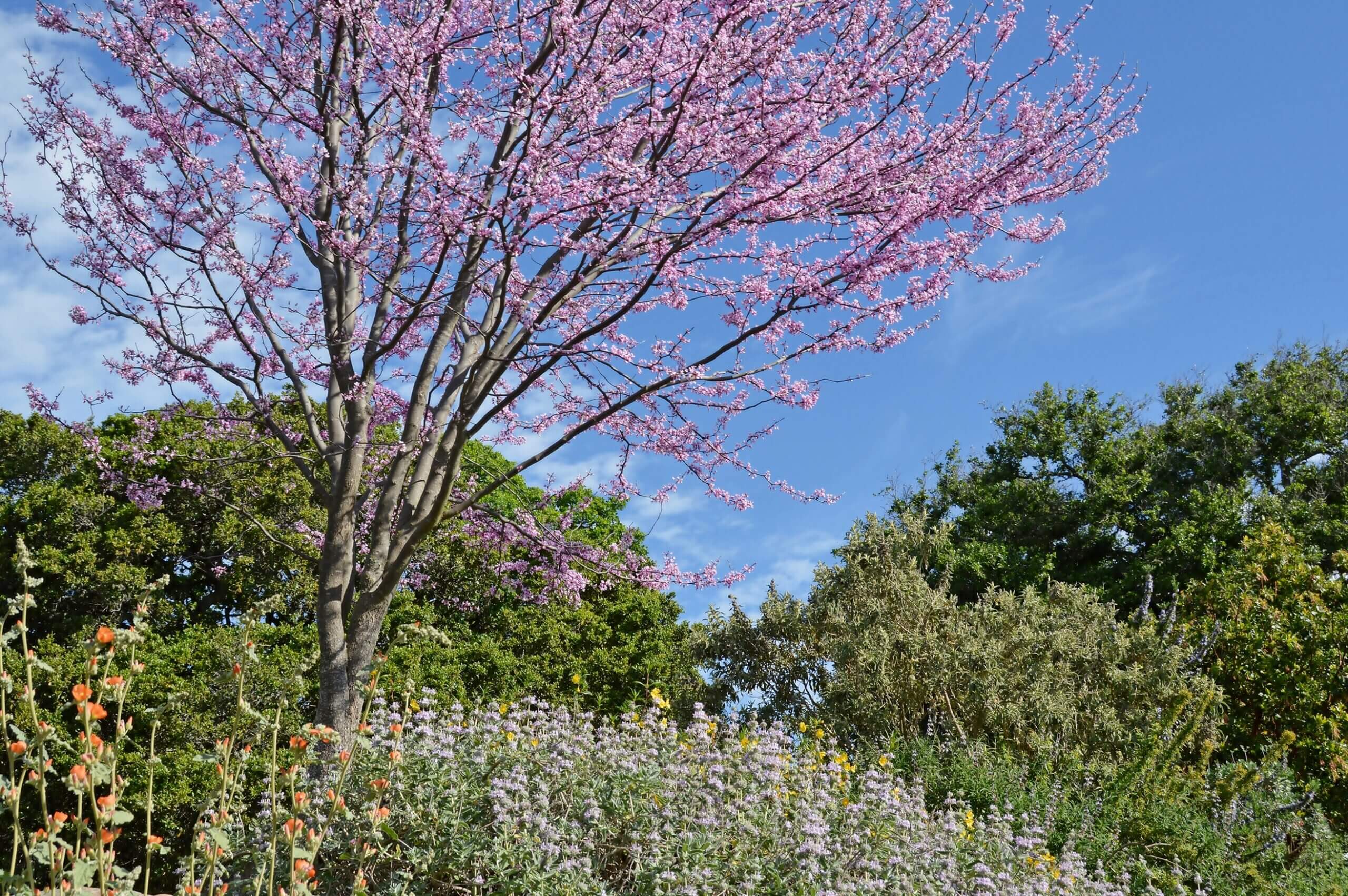Early in March, the Redbud is ready to burst into bloom; the beautiful zig-zagging tracery of its branches soon to be disguised in a cloud of pink flowers. I’ve planted several redbuds in different areas on our property, but the most spectacular is a well-developed small tree, now about 15 feet tall, in my front border. As it happens, it is an eastern Redbud (Cercis canadensis), a beautiful case of a mistaken identity!
About eighteen years ago, I was enrolled in a Nursery Management class at the College of Marin and our instructor always had plant propagules to share with his students. One day he took a bag of moist perlite full of stratified, and germinating redbud seeds from the refrigerator to share with the class. I took a dozen or so to grow on, but it wasn’t until several years later that I noticed some minor differences in the leaves of certain specimens: some were fully rounded, or with a slightly indented notch, others showed a delicate little tip to the rounded form, making the leaf almost a heart shape.
As it turned out, two species were inter-mingled, the eastern redbud, and the western redbud (C. occidentalis), and over time I’ve noticed differences in their growth habits, also. The eastern redbud has developed a single substantial trunk, whereas the western grows in a more shrubby form and much more slowly. The eastern is also a prolific bloomer; the first flowers appeared when the tree was about twelve years old. Western redbuds do not bloom as reliably here in Marin; mine never have. They seem to want more cold nights than I get on my virtually frost-free hill in order to set flower buds.
I find it immensely satisfying to have nurtured “my” beautiful redbud along since it was nothing more that a single root and a set of cotyledons! I grew it on in containers of ever-increasing size for about five years, knowing that I would soon have a permanent garden in which to plant it. We planted it out in 2006, and protected it from the browsing deer for a few years with a cage.
The first blooms came in 2012, when my tree was a pre-teen, and the show each year thereafter has been more and more spectacular. The trunk is now substantial, about six inches in diameter, and there’s also a healthy colony of lichens on the northeast facing side. Several years ago, I removed drip irrigation from the tree; it gets nothing but incidental water from plants close by. The redbud has no disease or pest problems; it gets a top-dressing of compost or mulch every year, and is pruned while dormant to preserve its beautiful form.
There’s so much to love and appreciate about this tree: I love the beauty of its blossoms, the graceful growth pattern, the delicate shade it provides when fully leafed out, the bit of fall color as leaves begin to drop. The leaves are also a good addition to any of my compost piles.
A number of creatures get resources from redbuds; deer browse the young leaves if they can reach them, bumblebees seek nectar from the flowers, and a great number of birds just find good perches within its canopy, or a great place to sing from! When I collect seeds from redbuds, I often find that beetles, usually a weevil of some sort, have got to them first.
Western redbud was an important basketry plant for California’s native peoples, and they carefully managed the shrubs to get exactly the type of growth they needed. Redbud shrubs were coppiced in winter or very early spring to induce the growth of pliant, straight new stems. They used these stems to make cradleboards, sifters, and winnowing baskets.
They also made coiled cooking baskets from the redbud stems: baskets so tight that they held water! For one basket like this, seventy-five stems of about two and a half feet in length were needed. In managed stands just six shrubs could provide it all; in unmanaged stands about one hundred and fifty shrubs had to be visited in order to get enough supplies for one basket.


